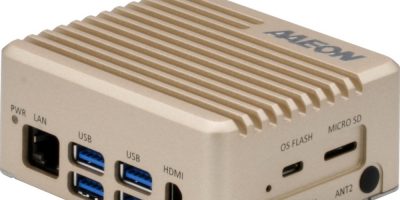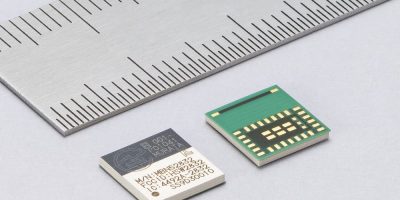Powered by Nvidia’s Jetson Xavier NX, the Boxer-8251AI is the latest edge box PC from Aaeon. The compact PC has a six-core 64-bit Arm processor, 384 Cuda cores, 48 Tensor cores, and two NVDLA engines capable of running multiple neural networks in parallel. The Boxer-8251AI delivers accelerated computing performance up to 21TOPS.
It also boasts 8Gbyte of LPDDR4 memory and 16Gbyte of onboard eMMC memory which can be expanded through the Micro-SD card slot.
The Jetson Xavier NX allows users to select one of five performance modes to tailor the number of cores, processor speed, and power draw the system uses. Combined with the thermal design, the PC allows users to match processor performance with thermal performance for each operating mode.
The Boxer-8251AI has two COM ports and four USB 3.2 Gen 1 ports, as well as Gigabit Ethernet port. The PC can integrate into existing applications as well as new ones, says Aaeon. The rugged, fanless design keeps dust and other contaminants out of the system, offering reliable and low-maintenance operation, adds the company.
Alex Hsueh, senior director of Aaeon’s System Platform Division, praised its AI at the edge capabilities in existing and emerging applications: “Thanks to this flexibility, the Boxer-8251AI is able to power a wide range of AI and edge computing applications from smart city environments to monitoring public transportation users for fever and compliance with face mask requirements,” he observed.
Aaeon was established in 1992, as a designer and manufacturer of professional intelligent IoT solutions. Committed to innovative engineering, the company provides reliable and high quality computing platforms, including industrial motherboards and systems, industrial displays, rugged tablets, embedded controllers, network appliances and related accessories, as well as integrated solutions.
Aaeon also has the hardware and services for premier OEM/ODMs and system integrators worldwide. As an Associate Member of the Intel Internet of Things Solutions Alliance, Aaeon offers customised end-to-end services from initial product conceptualisation and board product development, to mass manufacturing and after-sales service programs.







